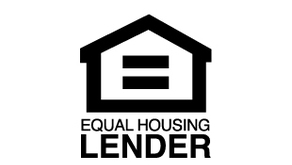As you consider your mortgage options, you need to know the difference between two key figures: the interest rate and the annual percentage rate (APR). These two numbers, both expressed as percentages, appear on the paperwork and truth-in-lending documentation that you receive when you qualify for a mortgage. Having a solid grasp of these two numbers will help you to understand how much your mortgage will cost so that you can determine which mortgage to choose.
The interest rate represents the cost of borrowing the principal loan amount of your mortgage. It can be a fixed or variable rate, depending on what you qualify for. The APR, however, is the bigger picture of the actual cost of your mortgage. It includes not only your interest rate but the other expenses from the lender that you’ll need to cover to satisfy the loan. As you shop, you’ll want to compare apples to apples, so pay close attention to both interest rates and the APR to arrive at the best decision.
The differences between the interest rates and APRs you’re quoted will affect the price you pay each month as well as the costs to pay off the mortgage entirely. Understanding these two sets of numbers will help you make an informed decision between different mortgage products.
 What Are Interest Rates?
What Are Interest Rates?
Simply put, your mortgage interest rate is how much it costs every year to borrow money from your lender. Your interest rate will be expressed as a percentage of your total loan balance. Every month, expect to pay the interest cost in addition to the payment of your principal.
 What Factors Determine Interest Rates?
What Factors Determine Interest Rates?
The interest rate of your loan will be determined by two main factors: prevailing market rates and your credit risk. Prevailing interest rates work with current market dynamics. Mortgage rates are tied to the basic rules of supply and demand. Factors such as inflation, economic growth, the Federal Reserve System’s monetary policy, and the state of the bond and housing markets all affect mortgage rates in the United States.
Apart from the prevailing market rates, your individual financial situation, or credit risk, will also have an impact on the rates that you’ll be offered.
These elements of your personal financial situation are all used to determine your interest rate:
- Credit score
- Credit history
- Debt
- Income
- Employment history
- Cash reserves
- Down payment
- Term and size of your loan
 Fixed Rate vs. Variable Rate
Fixed Rate vs. Variable Rate
Most loans have either a fixed or variable interest rate. Fixed-rate mortgage costs will remain constant. For instance, if you select a mortgage with a 5% fixed interest rate, each year you will pay 5% of your loan balance as interest. As time passes, more of your payment goes toward principal reduction.
Another available option is an adjustable-rate mortgage. Interest rates on adjustable or variable-rate mortgages are usually set for a certain number of months or years from the commencement of the loan. After that, the interest rate will either rise or fall. This depends on the market index that your interest rate is tied to and the margin that your lender adds to that. This type of loan makes sense in a situation where you can benefit from the lower initial fixed period (for example, if the initial interest rate is fixed for five years and you expect to move before that period is over) or you’re not overly concerned with interest rates.
 What Is The APR?
What Is The APR?
The APR (annual percentage rate) offers the big-picture view of the total costs of a mortgage. It is a more comprehensive way to compare loans and includes the interest rate as well as the other fees and costs you’ll incur to secure your loan.
For a typical mortgage, the APR may include:
- Closing costs
- Loan origination fees
- Underwriter fees
- Mortgage insurance
- Broker fees
- Discount points (you can pay these at closing to secure a better interest rate on your mortgage and save money over the long term)
- Rebates
Since the APR covers more than the interest that you’ll be paying on the loan, this percentage is almost always higher than the nominal interest rate. The only exception to this rule is if your lender is offering a rebate on a portion of your interest cost.
 How To Calculate The APR
How To Calculate The APR
Just like the interest rate, the APR is usually presented as a percentage. Here’s an example calculation: you qualify for a fixed-rate $200,000 mortgage with a 6% nominal interest rate. All told, your closing costs, broker fees, mortgage insurance, loan origination fees, discount points, and underwriter fees add up to $5,000. This addition brings your new total loan amount up to $205,000. When you apply that 6% interest rate to this new loan value, your resulting annual mortgage interest payment becomes $12,300.
To solve for the APR, divide this annual payment by the original loan amount. In this case, the APR is 6.15.%
The exact formula for calculating your APR will depend on the terms of your loan (length, fixed or variable, etc.). A mortgage lender or broker can help you with these calculations.
 How To Compare Interest Rates To APR
How To Compare Interest Rates To APR
Should I use the APR or interest rate?
Now that you understand what interest rates and APR represent, it’s helpful to know when to prioritize each number to find the best solution for you. Make sure to consider the following:
- Consider the length of time you plan to remain in your home.
a) If you’ll complete your mortgage term and have no plans to move in the near future, the APR will be helpful in providing a comprehensive view of your anticipated costs.
b) If you might sell your home or plan to refinance your mortgage at any point during the life of your loan, consider that these will add additional costs to your loan. The APR cannot account for costs outside of what is explicitly covered when you sign the loan paperwork.
c) If you move or sell your home, determine the breakeven point in your mortgage and adjust your plans accordingly. Depending on your mortgage, a loan with a lower APR might cost less over the course of the entire loan but more in the first few years. - Consider the type of mortgage you’ll get
a) For fixed-rate mortgages, the APR is a helpful indicator of what you can expect to pay. Make sure that you consider all applicable fees since a few might not be included in the APR provided by your lender—especially appraisals, title insurance examinations, or property surveys.
b) For adjustable-rate mortgages, the APR is really anyone’s guess outside of the initial term. - Consider how much you want to pay each month
a) For a lower monthly payment, focus on the interest rate.
b) For lower overall costs of the loan, focus on the APR.
How do I compare rates among lenders?
Here’s what to look for to make sure that you’re comparing apples to apples.
- Make sure that the principal is for the same amount—that the rates, terms, down payment, etc. are consistent.
- Compare the APR of one lender to the APR of another.
Conclusion
Choosing a mortgage can be difficult. Thankfully, there are a lot of options, and brokers or lenders have to be up-front in showing you what costs you can anticipate. The interest rate and APR are both helpful gauges to use to compare the terms and rates of each mortgage product.
As you carefully consider each factor that goes into determining how much you’ll need to pay off your mortgage, understand that these two figures, the interest rate and APR, give you important snapshots of what you need to know. Spend time with your broker or lender to seek clarity and ask questions as needed. After all, you don’t secure a mortgage every day!
First of all, make sure that you compare apples to apples—that is, that terms, rates, down payments, etc., are consistent. Then, all other things being equal, consider the implications of the interest rates and overall costs to procure the loans. Depending on your circumstances, prioritize the interest rate or the APR in your initial search. Make sure to thoroughly compare the inclusions within the quoted APR to see which product best suits you.
If you have any other questions about interest rates, APRs, or mortgages in the Chicago area, feel free to contact us at A and N Mortgage. We’re happy to help!
A and N Mortgage Services Inc, a mortgage banker in Chicago, IL provides you with high-quality home loan programs, including FHA home loans, tailored to fit your unique situation with some of the most competitive rates in the nation. Whether you are a first-time homebuyer, relocating to a new job, or buying an investment property, our expert team will help you use your new mortgage as a smart financial tool.








